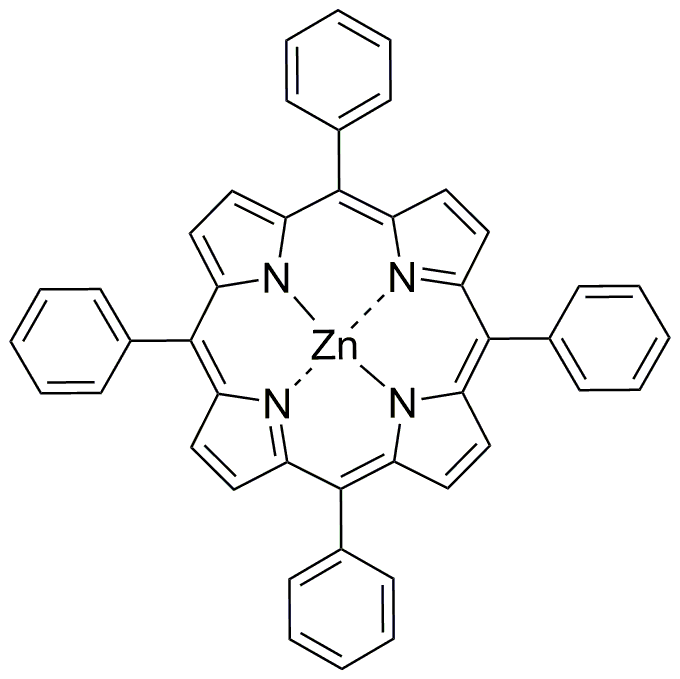Zinc(II) Tetraphenylporphyrin is widely utilized in research focused on:
- Photodynamic Therapy: This compound is used in medical applications to treat certain cancers. Its ability to generate reactive oxygen species upon light activation makes it effective in targeting and destroying cancer cells.
- Solar Energy Conversion: In the field of renewable energy, it serves as a photosensitizer in dye-sensitized solar cells, enhancing the efficiency of light absorption and energy conversion.
- Catalysis: It acts as a catalyst in various chemical reactions, particularly in organic synthesis, improving reaction rates and selectivity compared to traditional catalysts.
- Sensor Development: This compound is employed in the creation of chemical sensors for detecting gases and pollutants, providing a sensitive and selective response to environmental changes.
- Biochemical Research: Researchers use it to study electron transfer processes in biological systems, contributing to a better understanding of metabolic pathways and energy transfer in cells.
General Information
Properties
Safety and Regulations
Applications
Zinc(II) Tetraphenylporphyrin is widely utilized in research focused on:
- Photodynamic Therapy: This compound is used in medical applications to treat certain cancers. Its ability to generate reactive oxygen species upon light activation makes it effective in targeting and destroying cancer cells.
- Solar Energy Conversion: In the field of renewable energy, it serves as a photosensitizer in dye-sensitized solar cells, enhancing the efficiency of light absorption and energy conversion.
- Catalysis: It acts as a catalyst in various chemical reactions, particularly in organic synthesis, improving reaction rates and selectivity compared to traditional catalysts.
- Sensor Development: This compound is employed in the creation of chemical sensors for detecting gases and pollutants, providing a sensitive and selective response to environmental changes.
- Biochemical Research: Researchers use it to study electron transfer processes in biological systems, contributing to a better understanding of metabolic pathways and energy transfer in cells.
Documents
Safety Data Sheets (SDS)
The SDS provides comprehensive safety information on handling, storage, and disposal of the product.
Product Specification (PS)
The PS provides a comprehensive breakdown of the product’s properties, including chemical composition, physical state, purity, and storage requirements. It also details acceptable quality ranges and the product's intended applications.
Certificates of Analysis (COA)
Search for Certificates of Analysis (COA) by entering the products Lot Number. Lot and Batch Numbers can be found on a product’s label following the words ‘Lot’ or ‘Batch’.
*Catalog Number
*Lot Number
Certificates Of Origin (COO)
This COO confirms the country where the product was manufactured, and also details the materials and components used in it and whether it is derived from natural, synthetic, or other specific sources. This certificate may be required for customs, trade, and regulatory compliance.
*Catalog Number
*Lot Number
Safety Data Sheets (SDS)
The SDS provides comprehensive safety information on handling, storage, and disposal of the product.
DownloadProduct Specification (PS)
The PS provides a comprehensive breakdown of the product’s properties, including chemical composition, physical state, purity, and storage requirements. It also details acceptable quality ranges and the product's intended applications.
DownloadCertificates of Analysis (COA)
Search for Certificates of Analysis (COA) by entering the products Lot Number. Lot and Batch Numbers can be found on a product’s label following the words ‘Lot’ or ‘Batch’.
*Catalog Number
*Lot Number
Certificates Of Origin (COO)
This COO confirms the country where the product was manufactured, and also details the materials and components used in it and whether it is derived from natural, synthetic, or other specific sources. This certificate may be required for customs, trade, and regulatory compliance.


